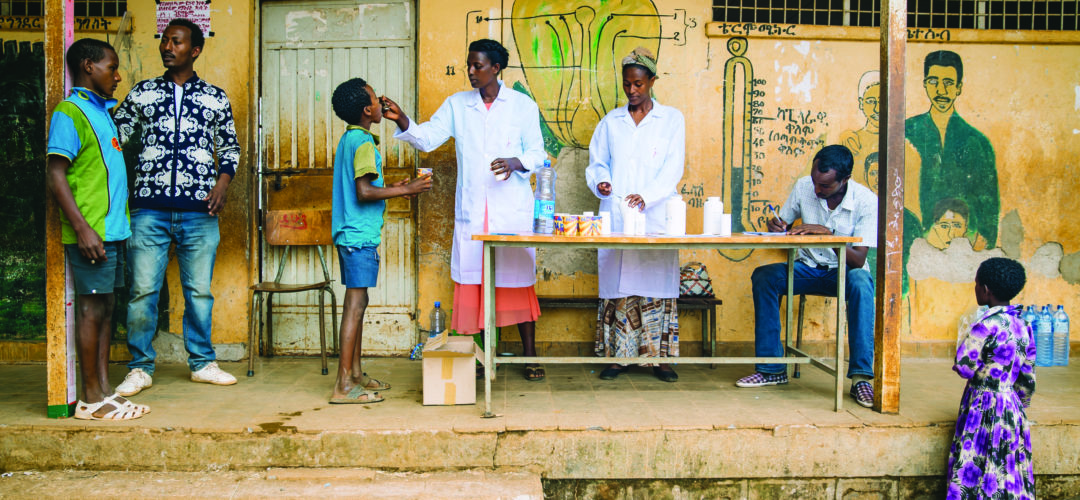Towards Transformational Impact: Two Approaches to Donor-Led Innovation
March 20, 2019 - By Rachel Flynn, Senior Manager, Funder Alliances, The Skoll Foundation
In recognition of the complexity and interconnectedness of so many of the world’s most pressing challenges, institutional funders have been thinking deeply—and collaboratively—about how to create more transformational impact.
Two of these many exiting initiatives were highlighted in last month’s webinar, Shifting Approaches to Funding: Learnings from Scaling Solutions and BUILD Initiatives, which featured Kathy Reich (Director, Ford Foundation) and Heather Grady (Vice President, Rockefeller Philanthropy Advisors) in conversation with Melissa Berman (President and CEO, Rockefeller Philanthropy Advisors).
Scaling Solutions
Scaling Solutions, an initiative that encourages funders to work collaboratively to make longer-term, more adaptive and more flexible resources available to their grantees in order to support scalable systems-level change, is now in its third year. Representing this collaborative effort, Rockefeller Philanthropy Advisors’ Heather Grady shared recommendation and findings from the initiative’s first report. These five recommendations, taken from dozens of interviews and illustrated through twelve case studies, offer a set of best practices for funders interested in working more effectively with grantees and with each other to create transformative impact. The initiative’s second report, Scaling Solutions Towards Shifting Systems: Approaches for Impact, Approaches for Learning, includes case studies of funders who successfully moved from endorsing approaches identified in the first report to improving their policies and practices around those approaches.
Grady closed with a summary of the initiative’s three most significant lessons learned to date:
- Most successful systems change collaboratives start with small number of funders with existing relationships and grow from there
- Identifying and supporting strong leadership is key for success
- Monitoring and evaluation remains the area of greatest donor interest, and a focus of the Scaling Solutions group going forward
BUILD
The Ford Foundation’s BUILD (Building Institutions and Networks) initiative, represented during the webinar by its director, Kathy Reich, is another example of a strategic and adaptive new donor model. The five-year, $1 billion investment by the Ford Foundation provides general operating support to its 300 grantee organizations alongside support for assessment and institutional strengthening, peer learning opportunities and rigorous evaluations.
Lessons and learnings from BUILD’s first eighteen months are outlined in their report, Changing Grant Making to Change the World, and include that:
- Nonprofits thrive with longer, larger, more flexible grants
- Long-term, flexible grants work best when they align with strategy
- Grants like these build stronger relationships between funders and grantees
- Trust must still be built with time and effort
- These types of grants work anywhere in the world (there have been 90 BUILD grantees in 26 countries to date)
- Supporting networks and institutions is critical
- Rigorous evaluation is important for gauging success, impact, and grantee satisfaction
Themes and Takeaways
Heather and Kathy took questions from a diverse and engaged audience that included participants from 32 countries. Questions ranged from the tactical (How have these two initiatives informed how each institution thinks about grantee evaluation?) to the grantee-focused (How can a small or medium-sized international NGO think about approaching systems change?) to the philosophical (What role can donor collaboratives and innovative philanthropy play in addressing deep income and social inequality?).
The audience was particularly interested in the role of networks in these two initiatives: Where were networks helpful, how could they be challenging, what are the best tools for managing and engaging them, and what is the difference between a network and a movement? Other themes that emerged were around the power dynamic between funders and their grantees, and ways to mitigate a magnification of this effect with a donor collaborative (one suggestion: NGOs should collaborate too!), as well as how the philanthropic field can better leverage decades of systems-change research.
Heather and Kathy’s answers to these questions returned to a set of common themes:
- Strong leadership is critical and must be cultivated and supported
- Funder collaboratives need to be clear from the outset about their shared goals and processes
- Funder collaboratives should be particularly responsive to grantee input and feedback.
- Peer-to-peer influence and evidence are the two most powerful tools we have to affect the decisions and directions of others in the funder community
- Systems change requires time, coordination, and rigor
These are but two examples of how ambitious, introspective approaches to grantmaking can build trust between funders and grantees and ultimately drive more meaningful and sustainable impact. We encourage you to follow along as these two exciting initiatives enter their next phases, to share what resonates most with you, and to let us know what’s missing. We are eager to see where this work takes us next and thank you for being along for the journey.
Back to News